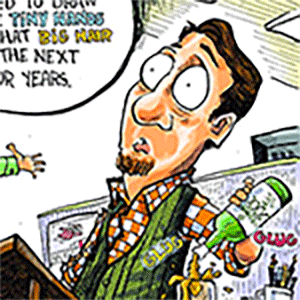With deadlines looming, Chesapeake Bay environmental agreement will be revised
Published in Science & Technology News
The Chesapeake Bay Executive Council, a group of governors and other environmental leaders, announced plans to revise the Chesapeake Bay Watershed Agreement.
With the 2014 agreement, the council committed to increasing the watershed’s resiliency and withstanding the effects of a changing climate. Many of the objectives in the agreement have a 2025 deadline, but some goals measuring bay health will not be met by then. Virginia is 80% to its goal of reducing nitrogen and 62% of its goal for phosphorus, according to a report released by the EPA earlier this year.
The state has already met its goal for reducing sediment by 2025.
Too much nitrogen, phosphorus and sediment in the Chesapeake Bay contributes to poor water quality. Nitrogen and phosphorus fuel the growth of algae blooms, and sediment can block sunlight from reaching underwater grasses, which in turn suffocates shellfish.
Now, the council has directed its staff committee to update the agreement. Two years ago, the committee began charting what those changes may look like, and earlier this year, it released a 17-page report detailing the state of the agreement made so far and what kind of goals are still needed to be reached. The committee noted wins in increased tree canopy, certain rivers being reopened to migrating fish and the restoration of more than 1,500 acres of oyster habitat.
It also details lagging progress for reducing pollutants.
“Refreshing the voluntary Watershed Agreement that guides our efforts will help make sure that we are science-led and people-driven as we rededicate ourselves to delivering clean water, conserved landscapes and thriving living resources for all,” said Del. David Bulova, chair of the Chesapeake Bay Commission.
The council met on Tuesday in Annapolis to discuss the agreement, and the Executive Council has directed the committee to officially update the Chesapeake Bay Watershed Agreement by the end of next year. It also created a new Agricultural Advisory Committee to help advise on strategies regarding agriculture best practices. While states have made notable progress on work to reduce pollution, particularly from wastewater treatment plants, efforts are lagging to curb polluted runoff from developed areas and farms.
Despite missing the 2025 deadline, states are still required to meet the pollution-reduction goals. Hilary Harp Falk, president and CEO of the Chesapeake Bay Foundation, said the bipartisan agreement on Tuesday is “a really big deal” for the Chesapeake Bay’s restoration.
“We have momentum. Water quality is improving. Crabs, grasses, and oysters are starting to recover,” Falk said. “That recovery is fragile and facing new challenges like climate change. But as we saw in the Executive Council’s demonstration of leadership, partnership and commitment, the state of the Bay Partnership is stronger than ever.”
Gov. Glenn Youngkin said goals do not necessarily need to be changed, but the timeline to achieve them has been “unrealistic.” He said it is important to have a focus on policies and principles that “embrace effective government,” as well as accountability and prioritization of funding for incentive-based approaches that work with farmers.
“When we got started in 2022, we incorporated aggressive plans focused on the most impactful areas of investing, and then, as I said, in partnership with our General Assembly, we worked hard to fund those very impactful elements — particularly the agricultural practices which have shown substantial impact,” Youngkin said. “From my perspective, I don’t believe we should back off. I just think we need to make sure that we’ve got a plan to achieve them.”
_____
©2024 The Virginian-Pilot. Visit pilotonline.com. Distributed by Tribune Content Agency, LLC.







Comments